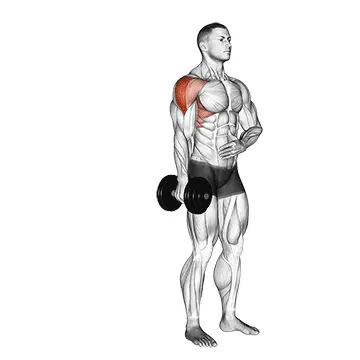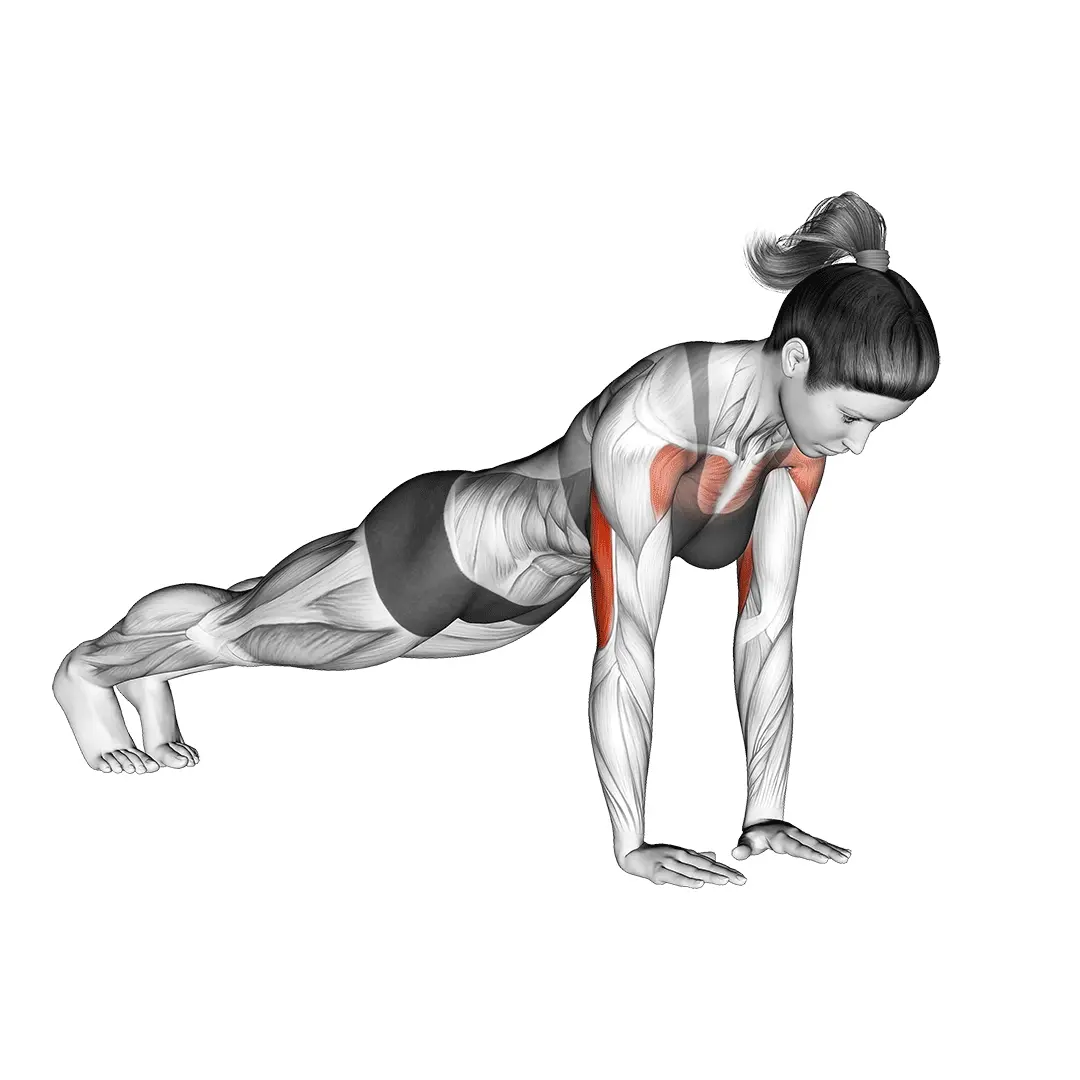Cable Front Raise Movement

Muscles Involved
The cable front raise movement primarily targets the anterior deltoids, which are the front part of the shoulder muscles. In addition to the primary target, this exercise also engages the lateral deltoids and upper pectoralis major, contributing to overall shoulder development and stability. The constant tension provided by the cable system helps in activating the stabilizing muscles in the core, specifically the rectus abdominis and obliques, ensuring proper posture and support throughout the movement.
Top Mistakes
- Using too much weight: Lifting excessively heavy weights may cause improper form and increase the risk of injury.
- Poor posture: Arching the back or leaning excessively can strain the back and diminish the effectiveness of the exercise.
- Incomplete range of motion: Not raising the arms to shoulder level leads to a less effective workout and decreased muscle engagement.
- Relying on momentum: Swinging the weights instead of controlled lifting can lead to improper muscle recruitment and potential injury.
Execution Tips
- Start with a light weight to perfect your form before progressing.
- Keep your feet shoulder-width apart and your core engaged to maintain stability.
- Hold the cable handles with palms facing down and elbows slightly bent to reduce strain.
- Raise your arms slowly and steadily to shoulder height, keeping the movement controlled.
- Pause briefly at the top of the lift before lowering the weights back to the starting position in a controlled manner.
Workouts
The cable front raise can be effectively incorporated into a shoulder workout routine. Aim for 3 to 4 sets of 10 to 15 repetitions, adjusting the weight as needed to ensure proper form is maintained throughout. Consider pairing it with complementary exercises such as lateral raises, overhead presses, or face pulls to develop shoulder strength comprehensively. Ensure to include adequate rest between sets to promote recovery and perform the exercise at a slower tempo to maximize muscle engagement.
Conclusion
Incorporating the cable front raise movement into your workout regimen not only enhances shoulder strength and mobility but also improves overall upper body aesthetics. By prioritizing proper form and engaging multiple muscle groups, this exercise contributes to balanced shoulder development and functional fitness, making it an essential tool for both beginners and experienced athletes alike.



